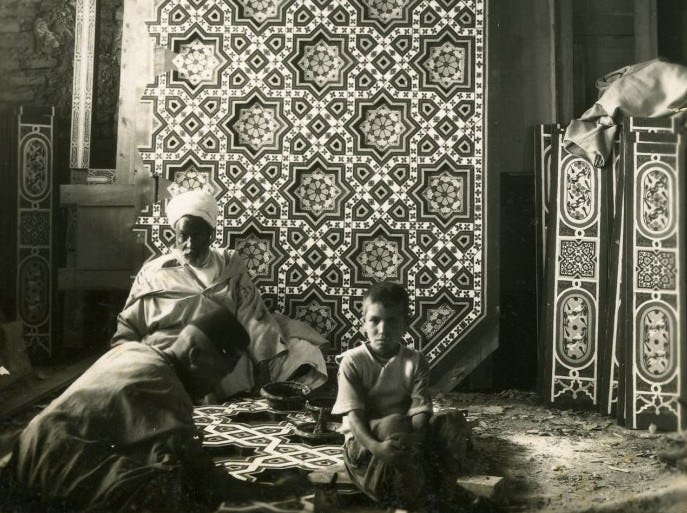Carved Marble Wall Panel with Parchin Kari (Semiprecious Stone Inlay) of Botanical Motifs
Date1935-1938
PeriodModern
MediumMarble, semiprecious stones
DimensionsOverall: 30 x 21 in. (76.2 x 53.3cm)
ClassificationsStonework
Credit LineCourtesy of the Doris Duke Foundation for Islamic Art
Object number41.49x
DescriptionThis inlaid botanical design decorates the dado, or lower wall panel, of the bathroom in the Mughal Gallery. The floral design is formed from multicolored gemstones inlaid into marble using a technique called parchin kari, meaning “inlay” or “driven-in” work. This floral image is thought to be a fantastic version of a bellflower (Campanula) and is formed from jade and carnelian. Like many of the botanical images represented in this corpus, this floral design is based on an existing Mughal design. The precedent for this image is found on the upper cenotaph of the Taj Mahal.The rooms that today form the Mughal Gallery were originally Doris Duke’s private bedroom, dressing room and bathroom. They were referred to as the ‘Mughal Suite’ because of their architecture and decoration draw inspiration from the monuments of the Mughal dynasty, which ruled from 1526 until 1858 CE in South Asia. The inlaid marble, pierced stone screens and other decorative elements of the Mughal Suite can be compared, for instance, to the decoration of the Taj Mahal, the tomb built by the Mughal emperor Shah Jahan between 1631 and 1648 CE. Doris Duke would have seen the Taj and other Mughal buildings during her travels in India in 1935. Her version of Mughal architecture was created for her by the workshop of Rai Bahadur Seth Lachhman Das in Agra, India, working to the designs of Francis Barrington Blomfield, a British designer based in Delhi. The carved marble elements arrived and were installed in Hawaii in 1938-39.
On View
On viewCollections
















